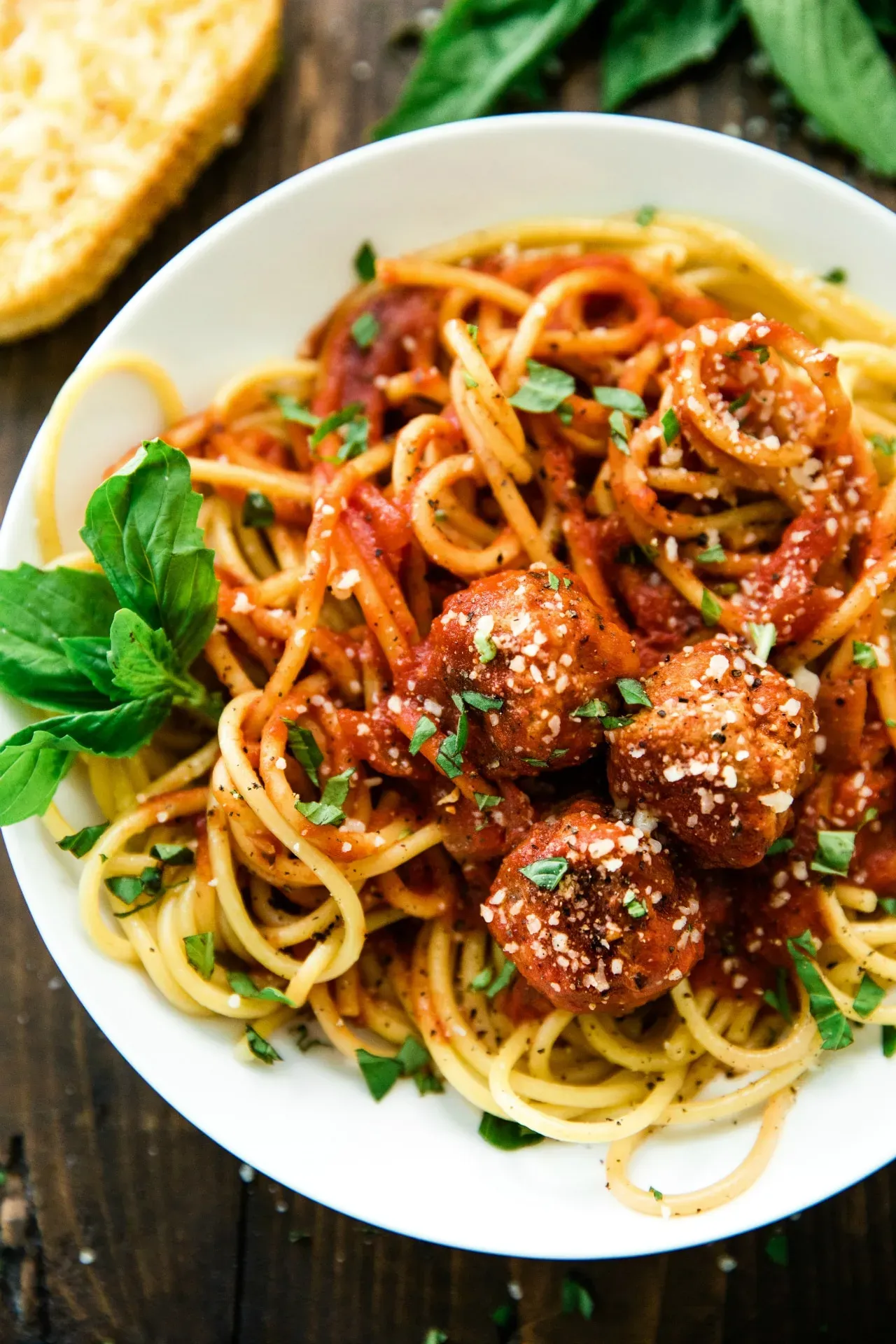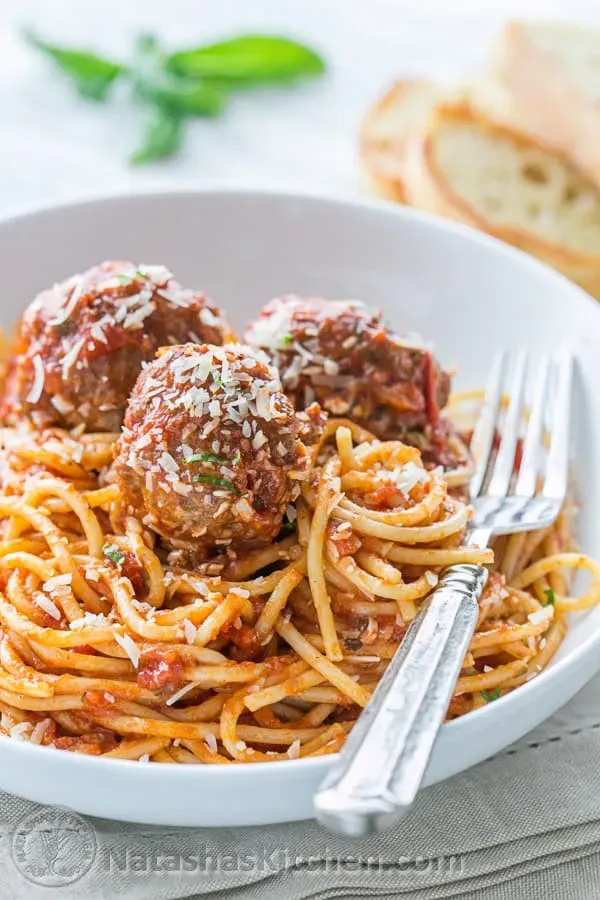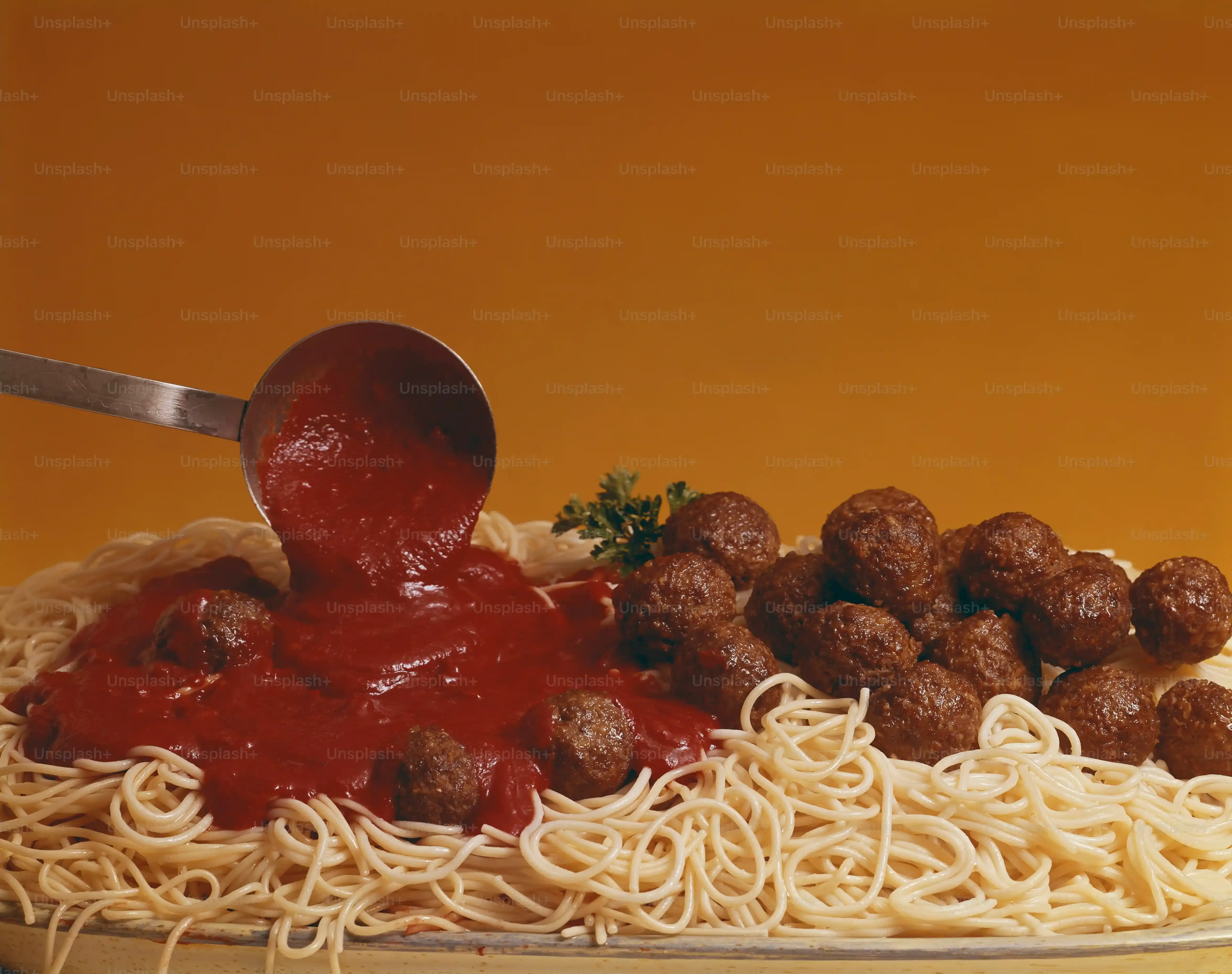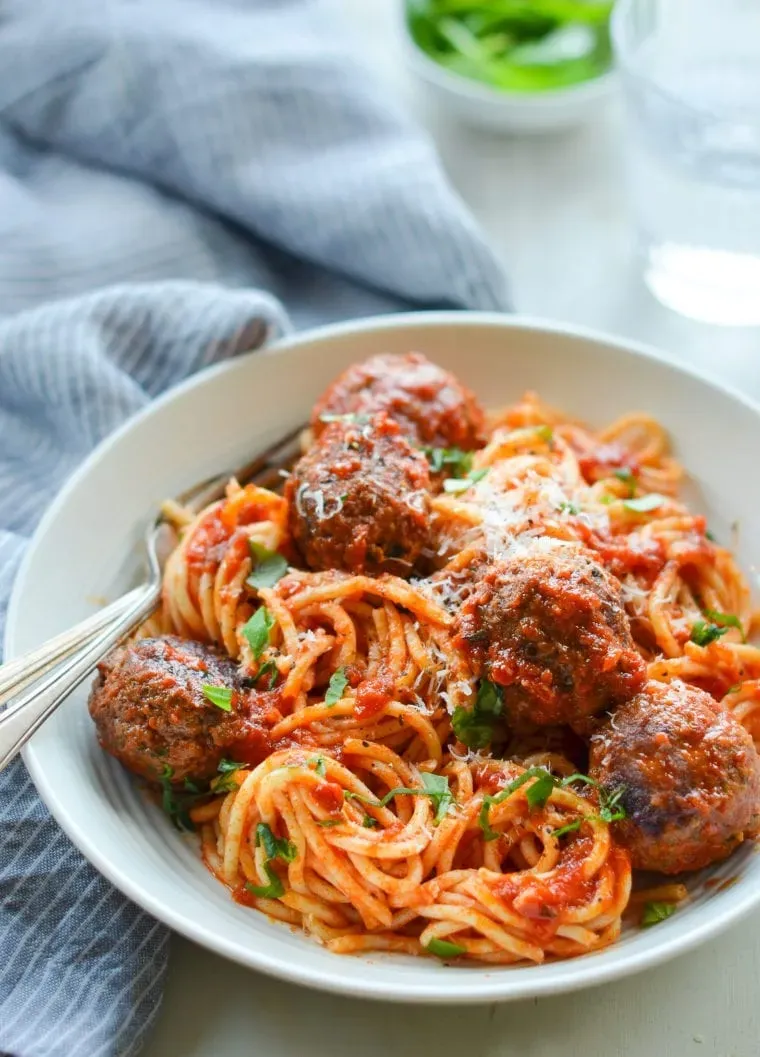Table of Contents
Let's be honest. Everyone thinks their Nonna made the best spaghetti and meatballs. Or maybe it was that little Italian place down the street. The truth is, chasing the title of the "best spaghetti and meatballs recipe ever" is a worthy pursuit, fraught with family secrets and strongly held opinions. You've probably tried recipes that yielded tough, dry meatballs or a bland, watery sauce. It's frustrating, right? We get it. This isn't just about throwing some ground meat and canned tomatoes in a pot. Crafting truly memorable spaghetti and meatballs requires attention to detail, a willingness to ignore some old wives' tales, and a focus on flavor at every step.
Crafting the Tender Meatballs for Your Best Spaghetti and Meatballs Recipe Ever

Crafting the Tender Meatballs for Your Best Spaghetti and Meatballs Recipe Ever
Alright, let's talk meatballs. This is where many recipes stumble, yielding dense little golf balls instead of the tender, yielding spheres you crave. The secret sauce, if you will, to crafting the tender meatballs for your best spaghetti and meatballs recipe ever isn't really a secret at all – it's about moisture and gentle handling. You absolutely need a binder, but not just any breadcrumb will do. We're talking about torn-up white bread soaked in milk, what the Italians call panade. This adds crucial moisture that keeps the meat from drying out as it cooks. Don't skip the combination of meats either; using a mix of lean ground beef and sweet Italian sausage brings both flavor and fat, contributing to that tender texture. And for the love of all that is holy, mix it gently. Overworking the meat is the fastest way to tough meatballs. Think of it less like kneading dough and more like politely introducing ingredients to each other.
Simmering the Perfect Marinara Sauce from Scratch

Simmering the Perfect Marinara Sauce from Scratch
Building the Flavor Foundation
so you've got your meatballs sorted. Now for the backbone of this dish: the sauce. Simmering the Perfect Marinara Sauce from Scratch isn't just about opening a can of crushed tomatoes. It starts with building a solid flavor foundation. You need good olive oil – none of that light stuff – heated gently in a heavy-bottomed pot or Dutch oven. Then, add finely chopped onion. Sweat it low and slow until it's translucent and sweet, not browned and bitter. This takes patience, maybe 8-10 minutes. Once the onion is soft, add your minced garlic. Now, this is crucial: don't burn the garlic. Thirty to sixty seconds is usually plenty until you smell its fragrance. Burnt garlic is a one-way ticket to a ruined sauce.
Choosing Your Tomatoes and Letting it Simmer
The tomatoes are the star here. If you can find them, use good quality canned San Marzano tomatoes. They have a natural sweetness and lower acidity that makes a huge difference. Crush them by hand right into the pot – it’s messy but satisfying. Add a bay leaf or two, maybe a pinch of red pepper flakes if you like a little heat. Bring it to a gentle simmer, then turn the heat way down. This sauce needs time. Simmering the Perfect Marinara Sauce from Scratch means letting it bubble away gently for at least an hour, preferably longer. This allows the flavors to meld and deepen, transforming from simple ingredients into something truly special. Stir it occasionally to prevent sticking.
What happens during that simmer time?
- Flavors concentrate and deepen.
- Acidity mellows out.
- Sauce thickens naturally.
- Magic happens (mostly chemistry, but feels like magic).
Finishing Touches and Tasting
After the sauce has simmered and reduced, pull out the bay leaves. Taste it. This is your chance to adjust. Does it need a little salt? Maybe a touch of sugar if your tomatoes were on the acidic side (though good San Marzanos often don't need it). Some people add a splash of red wine or a knob of butter at the end for richness. Fresh basil added right at the end brings a burst of freshness. Remember, you’ll be simmering the meatballs in this sauce later, so the flavors will continue to develop. Trust your palate here. Simmering the Perfect Marinara Sauce from Scratch is a process, not a race.
Bringing It All Together: Meatballs Meet Sauce

Bringing It All Together: Meatballs Meet Sauce
Introducing Meatballs to Their New Home
the meatballs are formed, maybe browned (a quick sear adds color and flavor, though some purists skip it), and your marinara has been simmering, filling the kitchen with promises. This is the moment they unite: Bringing It All Together: Meatballs Meet Sauce. Gently slide the browned meatballs into that rich, aromatic sauce. Don't just dump them in. You've put effort into making them tender; treat them with respect. Ensure they are mostly submerged. The sauce shouldn't be a raging boil; keep it at a low, gentle simmer. This allows the meatballs to finish cooking through slowly while absorbing all the wonderful flavors of the marinara. It’s a crucial step for achieving the best spaghetti and meatballs recipe ever.
Simmering for Tenderness and Flavor
Once the meatballs are nestled in the sauce, resist the urge to stir constantly. Let them be. Simmer them gently for at least 20-30 minutes, maybe even longer if they are particularly large. This isn't just about cooking them through; it's about infusion. The meatballs release some of their savory juices into the sauce, and in turn, the sauce permeates the meatballs, making them incredibly moist and flavorful. You'll notice the sauce might thicken slightly as the meatballs cook. This low and slow method is key to preventing tough, dry meatballs. It's where the magic truly happens.
What happens during this crucial simmer?
- Meatballs finish cooking gently.
- They absorb sauce flavors deeply.
- Sauce gains richness from the meatballs.
- Texture becomes incredibly tender.
Serving Up the Masterpiece
Finally, it's time to serve. Cook your spaghetti al dente according to package directions. Drain it, but don't rinse it – you want that starch to help the sauce cling. You can either toss the pasta directly with a generous amount of sauce in the pot (my preferred method) or plate the pasta and ladle sauce and meatballs over the top. Garnish with freshly grated Parmesan cheese and chopped fresh basil or parsley. A little extra drizzle of good olive oil doesn't hurt either. Take a bite. That tender meatball, that rich sauce, the perfectly cooked pasta – this is why you went through the effort. This is the potential payoff for chasing the title of the best spaghetti and meatballs recipe ever.
Tips and Tricks for the Best Spaghetti and Meatballs Recipe Ever

Tips and Tricks for the Best Spaghetti and Meatballs Recipe Ever
Don't Fear the Fat (But Balance It)
Look, lean ground beef is great for your diet, but it makes lousy meatballs. If you want truly tender, flavorful meatballs for your best spaghetti and meatballs recipe ever, you need some fat in the mix. Using an 80/20 ground beef is a good start, but incorporating sweet Italian sausage is a game-changer. The sausage brings moisture, fat, and pre-loaded flavor from the pork and seasonings. A roughly 50/50 mix of beef and sausage is often the sweet spot. It gives you enough structure from the beef but plenty of richness and tenderness from the sausage. Trying to make meatballs solely from super-lean turkey or beef? You're fighting an uphill battle against dryness.
The Panade is Non-Negotiable
Seriously. That sad little pile of dry breadcrumbs some recipes call for? It’s a culinary crime. The secret to a light, tender meatball isn't just the meat mix; it's the panade. Tear up some stale-ish white bread (crusts removed are optional, but they can make lumps), soak it in milk or even water, and squeeze it out gently before mixing it in. This soaked bread creates tiny pockets of moisture within the meatball as it cooks, preventing it from becoming a dense, rubbery puck. It’s a simple step, but it makes a monumental difference in texture. Think of it as giving your meatballs a little internal hydration system.
Here's a quick panade guide:
- Use white bread, preferably a day or two old.
- Tear, don't cut, for better absorption.
- Soak in milk or water until soft throughout.
- Gently squeeze out excess liquid – you want it moist, not soggy.
- Mix it into the meat *before* adding other binders like egg or cheese.
Gentle Hands and Gentle Heat
Once you've got all your ingredients in the bowl – the meat, the panade, the egg, the cheese, the herbs, the garlic – mix it like you're folding a delicate soufflé, not kneading bread dough. Overworking the mixture develops the proteins in the meat, leading to a tough texture. Use your hands, but be light about it. Just mix until everything is *just* combined. When you roll the meatballs, don't pack them tightly. Keep them relatively loose. And for cooking? Forget frying them into oblivion or baking them until they're hard. Brown them gently if you like, then finish them by simmering them low and slow in the marinara sauce. This infuses them with flavor and keeps them incredibly moist. Patience here pays off handsomely.
FAQs and Variations on the Best Spaghetti and Meatballs Recipe Ever

FAQs and Variations on the Best Spaghetti and Meatballs Recipe Ever
Can I Make These Meatballs Ahead of Time?
Absolutely, planning ahead is a smart move when you're aiming for the best spaghetti and meatballs recipe ever, especially if you're hosting or just want a quick weeknight meal later. You've got a couple of options here. You can form the raw meatballs and store them covered in the fridge for up to 24 hours before cooking. Just bring them to room temperature for about 15-20 minutes before browning or adding to the sauce. Another excellent method is to brown the meatballs completely, let them cool, and then store them in an airtight container in the fridge for 3-4 days, or freeze them for up to three months. When you're ready to serve, simply add the browned meatballs directly to your simmering marinara sauce and let them heat through, absorbing that delicious flavor for at least 30 minutes. Freezing the cooked meatballs *in* the sauce is also an option and works beautifully for ready-to-eat portions.
What About Gluten-Free or Other Dietary Needs?
Adapting the best spaghetti and meatballs recipe ever for dietary restrictions is definitely possible. The biggest hurdle is usually the panade, which traditionally uses white bread. For a gluten-free version, you can use gluten-free bread soaked in milk, or try using cooked rice or even a small amount of gluten-free breadcrumbs mixed with milk or broth. The goal is moisture and binding, so experiment a little to find what works best. For dairy sensitivities, swap the milk in the panade for water or a non-dairy milk alternative, and omit or use a dairy-free substitute for the Parmesan cheese in the meatballs. The sauce is typically naturally gluten-free and dairy-free, assuming you use standard ingredients. Remember, the core principles of gentle mixing and slow simmering still apply, regardless of the ingredient swaps.
Are There Fun Variations to Try?
Once you've mastered the classic, feel free to play around with variations on your best spaghetti and meatballs recipe ever. Want a little kick? Add extra red pepper flakes to the sauce or a pinch of cayenne to the meatball mix. Craving something richer? Stir a dollop of ricotta cheese into the meatball mixture for extra tenderness, or finish the sauce with a knob of butter. You can also experiment with different herbs – a mix of parsley, basil, and oregano is classic, but a little fresh thyme or even a bay leaf in the meatball mix can add depth. Consider adding finely grated carrot or zucchini to the sauce for extra veggies (they'll melt away). Or, ditch the spaghetti and serve the meatballs and sauce over polenta, gnocchi, or even in a submarine roll for a killer meatball sub. The possibilities are pretty endless once you have a solid base recipe.
What's one simple change that could elevate your meatballs?
- Adding a pinch of nutmeg to the meat mixture.
- Using half ground beef and half ground veal or pork.
- Grating a small amount of onion directly into the meat.
Your Claim to the Best
So there you have it. We've walked through the careful steps: building those incredibly tender meatballs with the right mix and method, letting the marinara sauce simmer and deepen into something truly special, and bringing it all together in a harmonious dish. This isn't the quickest meal you'll ever make, but the payoff is significant. You've put in the effort, avoided the common pitfalls, and created something far beyond the usual weeknight fare. Serve this up, watch faces light up, and prepare to defend your newfound title for the best spaghetti and meatballs recipe ever. Just don't be surprised when people start asking for the recipe.